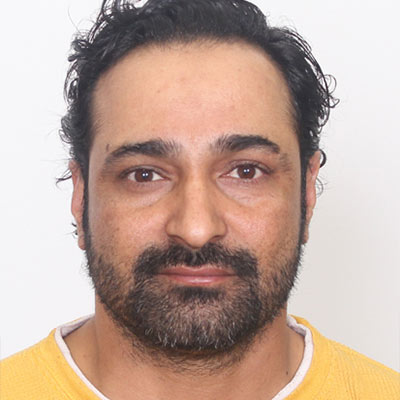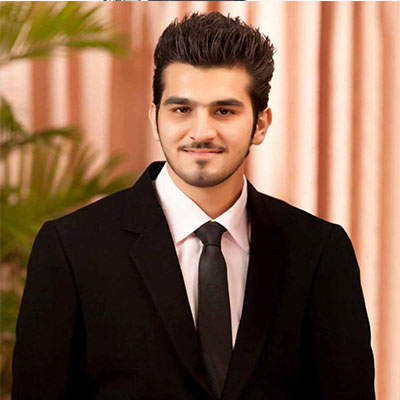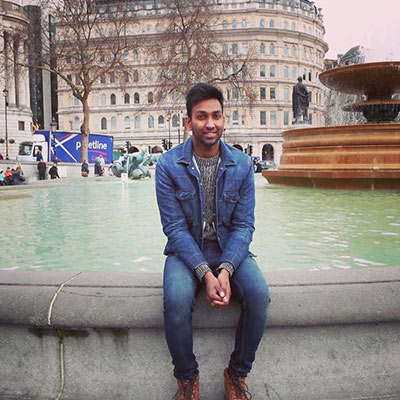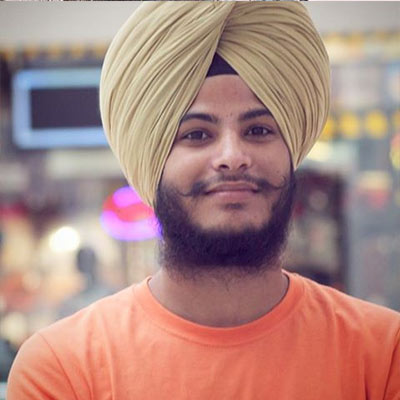WHY STUDY IN USA?
- Quality Education and Best experience
- More than 4,000 institutions offering undergraduate, postgraduate, and doctoral degree programmes with multiple specializations.
- Presence of a wide number of prestigious institutions with outstanding reputations worldwide.
- Availability of Scholarship is much higher than its counterparts
- Good value for money.
- Studying in the USA is the opportunity to gain first-hand experience of cutting-edge technology and exceptional research prospects.
- Switching of program and University is possible
- Students are allowed to work 20 hours per week in term time, and 40 hours per week during a vacation.
- Offer flexibility to explore student academic interests before choosing major
- High career prospects and good job opportunities
Education system in the USA
The United States of America offers qualitative education. The education system has 12 years of primary and high school followed by graduate college or professional and technical courses.
Primary School - Primary schooling starts at the age of 5 and continues for 5 to 6 years.
High School - After the first 5 years of primary schooling, the students go to the high school which continues for 6 to 7 years.
Once a student obtains their high school diploma, they are considered eligible for college or university admission.
Undergraduate School
Associate Degree: Equivalent to the first 2 years of a Bachelor’s Degree Programme, this 2 year course is the lowest level above high school.
Bachelor’s Degree: A 4-year degree course that considers your TOEFL/IELTS and SAT scores for admission. It offers B.A. and B.S. degrees interchangeably in various subjects.
Master’s Degree: This 1- or 2-years degree course requires 16 years of prior education. Exams required are GMAT (for management subjects), GRE (for science, arts and other subjects), and IELTS/TOEFL scores for admission exams.
Doctorate/PhD: Ranging between 3 to 5 years, only a post-graduate qualification holder can apply for a Doctorate/PhD. This requires a research proposal and GRE/GMAT and IELTS/TOEFL scores for the admission.

How can I apply to the USA Universities?
There are three main intakes for US Universities :-
- Fall ( August ) - it's a major intake
- Spring - January
- Summer - May
For a hassle free application process you should start making application as early as possible.
You should adopt following steps :-
- Get the assessment on your profile with AOCG counsellor and narrow your university or institute search to three to five schools.
- Collect the required documents for application like Reference letters , transcripts , SOP etc
- Get your GRE/GMAT/SAT or IELTS / TOEFL score .
- Edit and review your documents and application requirements, as each university is different.
- Send application pack to University
- Apply for Scholarship ( if applicable)
- Get Offer letter and I-20
- Apply for Visa
- Departure
If you are looking to apply for Master program in top ranking Universities then following process should be followed .

Admission requirements :-
- A completed application form
- Application fee ($50-100 per university)
- Admissions exam scores ( IELTS /TOEFL for English Proficiency and GRE/SAT and GMAT ) - IELTS 6.0 for UG and 6.5 for PG or TOEFL 90+ for PG and 80+ for UG and even without IELTS you may apply for study visa
- Statement of Purpose
- Transcript ( A transcript is a document listing your academic qualifications and marks during the final four years of school )
- 3 letters of reference for PG and 2 For UG program .
- Interview (for some universities)
- CV- Outlining extracurricular activities
NB : 12 years of education is required for UG program and 15 or 16 years of education is required to have admission in Master program . Most of Science based programs need 16 years of education .
Cost of Studying
Tuition Fee- The annual tuition fees depends on the University. It is generally low for public Universities and more for private Universities. In general, the tuition fees ranges between US$10,000 - US$45,000 .
Average tuition fee of UG program in a public university is around US$10000 - 15000 whereas private it may cost between US$12,000 to US$25000.
Average tuition fee of PG program in a public university is around US$12000 - 25000 while in private it may cost betweenUS$15,000 to US$45000.
Living expenses - Living expenses include house rent, food, books, insurance, mobile/internet and other Leisure activities. These expenses vary a lot from place to place.Your approximate budget for housing and utilities should be around $1000 to $1500 for a month.
Funding Options -
There are various funding options that you can avail:
Bank Loans: Most banks offer educational loan schemes. Loan Processing takes ample of time. Make sure you plan your loan needs well in advance.
Teaching assistantship (TA), Research assistantship (RA), Graduate assistantship (GA)
Various assistantships are available once you have arrived at the University. However, you need to find out what is the aid scenario in a particular University. In most Universities, the TA and RA are not immediately available and you may have to wait upto one year to get any of these assistantships.
Tuition Waivers: The University can waive off part of your tuition fees if it finds your academic record good enough.
On-Campus Jobs: The international student visa permits work on campus on a part-time basis for upto 20 hours per week. The positions include student helpers at the university bookstore, campus post office, dining halls, supervisory roles at graduate housing office, etc. The students are paid on an hourly basis and the money earned is usually sufficient to cover one’s living expenses.
Visa Process and Requirements
It is the last hurdle before you go ahead and pursue your dream. Initiate your visa application at least 4-5 months ahead of the date of joining a university in the US.
There are 2 types of student visa :-
F-1 Visa - It is the most common type of student visa. If you wish to engage in academic studies in the United States at an approved school, such as an accredited U.S. college or university, private secondary school, or approved English language program then you need an F-1 visa. You will also need an F-1 visa if your course of study is more than 18 hours a week.
An F-1 student visa can be issued up to 120 days in advance of your course of study start date. You will only be able to enter the US with an F-1 visa 30 days before your start date.
M-1 Visa
If you plan engage in non-academic or vocational study or training at a US institution then you need an M-1 visa. Some examples of "vocational study" are mechanical studies, technical studies, cooking classes, a language program, flight school or cosmetology program. Unlike the F-1 visa, the M-1 visa is valid for only one year. Students may apply for cumulative extensions for up to three years.
J Visa
The J-1 visa in the United States is for people who wish to take part in work-and-study-based exchange and visitor programs in the U.S.
Qualifying for an F1 Visa
In order to qualify for an F1 visa you need to satisfy the following criteria:
- You must be a foreign resident and must return home upon the completion of the programme you have applied for
- You must study at the institution through which the visa will be granted
- You must be able to show sufficient financial support
- You must have strong ties to your home country which consist of, but are not limited to:
- Assets (land, vehicle, house, etc.)
- Bank accounts
- Family
- A job offer letter upon completion of studies
Necessary items to provide with visa application
- Fee receipt confirming payment of the visa application fee of $160
- A Form I-901 SEVIS fee receipt indicating the SEVIS fee. The SEVIS website has more details
- Form DS-160 for non-immigrant visa
- A passport valid at least 6 months beyond your course completion date
- Digital photographs with required specifications
- A Certificate of Eligibility for Nonimmigrant (F-1) Student Status ( i.e. Form 1-20)
- Supporting Documents as per your visa type
Documents checklist for visa Interview :-
The US visa interview is normally for three minutes. Since this is a very short session, all students are required to have documents in a well arranged manner.
- Visa appointment letter
- Valid passport
- the I-20 form
- Payment receipt / I-901 SEVIS fee receipt .
- DS-160 form and photograph
- Academic documents (Original transcript, mark-sheets, degree certificates, GRE/GMAT/SAT and IELTS/TOEFL score ) , SOP, LOR, Cv or other documents which sent with application form .
- Financial docs
- Financial docs
- Bank statements- your parents’, your siblings’ and yours..
- Other financial documents like bonds, fixed deposits, shares, debentures and mutual funds.
- Affidavit from parents confirming that they are supporting your study
- If your parent/s owns a business, you will have to show business documents of the last two years’ profit or loss.
- If you have work experience then the appointment letters, salary slips, your relieving letters have to be shown next as a proof supporting your work experience.
- Your property documents ( to show your tie with your home country )
- CA Certificate ( to support your application with movable and immovable assets calculation )
- If you are financially sponsored by another person, bring proof of your relationship to the sponsor (such as your birth certificate), the sponsor's most recent original tax forms and the sponsor's bankbooks and/or fixed deposit certificates.
- M-1 applicants must demonstrate the ability to pay all tuition and living costs for the entire period of their intended stay.
- keep the other acceptance and reject letters from university applied.
SEVP-Recognised Institution
In order to study in the US you need to be accepted by a Student and Exchange Visitor Programme (SEVP) – approved university/school. The accreditation is extremely important as it ensures that your degree is recognised world-wide by both governmental and private organisations. Again, only these institutions can enrol overseas students in the Student and Exchange Visitor Information System (SEVIS) and offer documents required for an US student visa application.
Once you are accepted, the institution will provide you with Form I-20 for F-1 or M-1 visas and Form DS-2019 for J visas.
Dependent Visa
Spouses and unmarried children under the age of 21 who wish to accompany or join the main visa holder in the United States for the duration of his or her stay require derivative F or M visas. There is no derivative visa for the parents of F or M holders.
Family members who do not intend to reside in the United States with the principal visa holder, but wish to visit for vacations only, may be eligible to apply for visitor (B-2) visas.
Spouses and dependents may not work in the United States on a derivative F or M visa. If your spouse/child seeks employment, the spouse must obtain the appropriate work visa.
Cost of Visa
There are two fees associated with for F1 student visa for the USA
- SEVIS fee which is at present at $200
- Visa Application Fee (MRV Fee) which is at present $160 (at the exchange rate of INR 70)
| Type of Fee | F1 | J1 | |
|---|---|---|---|
| SEVIS Fee* | |||
| Amount | $200 | $180 | |
| Accepted modes of Payment | Christchurch | Credit Card Money Order/ Demand Draft | |
| Payable in | Dollars at the applicable exchange rate as determined by the bank | ||
| MRV Application Fee/ Visa Application Fee | |||
|---|---|---|---|
| Amount | $160 | $160 | $160 |
| Accepted modes of Payment | NEFT Online Transfer Instant Money Transfer by Mobile - IMPS By Cash at counters of Axis Bank/ Citibank | ||
| Payable in | Payable in INR at the Exchange Rate Fixed by the Consular Office (At present the exchange rate is fixed at $1 = INR 70) | ||
Spouses and dependents do not need to pay the SEVIS fee if they are going to the U.S. on F-2 or J-2 visas.
Universities in the USA
USA is the home of more than 1700 Universities and more than 150 Universities are among the top universities in the world . Number of students, studying in USA are growing continuously .
The most popular states for international study in the US were California, New York and Texas, and the most popular subjects were business and management, engineering, mathematics and computer science.
More information about US based universities can be found on TOP Universities and on here .
| University | Location | States |
|---|---|---|
| Massachusetts Institute of Technology | Cambridge | Massachusetts |
| Stanford University | Stanford | California |
| Harvard University | Cambridge | Cambridge |
| University of California, Berkeley | Berkeley | California |
| Cornell University | Ithaca | New York |
| University of Washington | Seattle | Washington |
| University of Michigan | Ann Arbor | Michigan |
| Purdue University | West Lafayette | Indiana |
| Penn State University | University Park | Pennsylvania |
| University of California, Los Angeles | Los Angeles | California |
| Columbia University in the City of New York | New York City | New York |
| University of Wisconsin-Madison | Madison | Wisconsin |
| The University of Texas at Austin | Austin | Texas |
| University of Pennsylvania | Philadelphia | Pennsylvania |
| University of Minnesota | Minneapolis | Minnesota |
| Princeton University | Princeton | New Jersey |
| New York University | New York City | New York |
| Carnegie Mellon University | Pittsburgh | Pennsylvania |
| Yale University | New Haven | Connecticut |
| University of California, Davis | Davis | California |
| University of California, San Diego | San Diego | California |
| University of Illinois at Urbana-Champaign | Champaign | Illinois |
| University of Florida | Gainesville | Florida |
| University of California, Irvine | Irvine | California |
| University of Maryland | College Park | Maryland |
| University of Southern California | Los Angeles | California |
| Michigan State University | East Lansing | Michigan |
| University of Chicago | Chicago | Illinois |
| University of North Carolina at Chapel Hill | Chapel Hill | North Carolina |
| Arizona State University | Tempe | New Jersey |
| Rutgers, The State University of New Jersey | New Brunswick | New Jersey |
| Duke University | Durham | North Carolina |
| Texas A&M University | College Station | Texas |
| University of Virginia | Charlottesville | Virginia |
| University of Arizona | Tucson | Arizona |
| University of Colorado Boulder | Boulder | Colorado |
| Johns Hopkins University | Baltimore | Maryland |
| Indiana University | Bloomington | Illinois |
| North Carolina State University | Raleigh | North Carolina |
| Boston University | Boston | Massachusetts |
| University of Utah | Salt Lake City | Utah |
| Northwestern University | Evanston | Illinois |
| The Ohio State University | Columbus | Ohio |
| Virginia Polytechnic Institute and State University | Blacksburg | Virginia |
| Georgia Institute of Technology | Atlanta | Georgia |
| Washington University in St. Louis | St. Louis | Missouri |
| California Institute of Technology | Pasadena | Texas |
| University of California, Santa Barbara | Santa Barbara | California |
| University of Pittsburgh | Pittsburgh | Pennsylvania |
| Oregon State University | Corvallis | Oregon |
| Vanderbilt University | Nashville | Tennessee |
| University of Iowa | Iowa City | Iowa |
| Tufts University | Medford | Oregon |
| University of Georgia | Athens | Georgia |
| University of Delaware | Newark | New Jersey |
| Colorado State University | Fort Collins | Colorado |
| Georgetown University | Washington | Washington |
| Iowa State University of Science and Technology | Ames | Ames |
| University of South Florida | Tampa | Florida |
| Brigham Young University | Provo | Utah |
| George Washington University | Washington | Washington |
| Florida State University | Tallahassee | Florida |
| University of Oregon | Eugene | Oregon |
| George Mason University | Fairfax | Virginia |
| Washington State University | Pullman | Washington |
| University of Massachusetts Amherst | Amherst | Massachusetts |
| University of Nebraska-Lincoln | Lincoln | Nebraska |
| Georgia State University | Atlanta | Georgia |
| Brown University | Providence | Rhode Island |
| Rice University | Houston | Texas |
| University of Notre Dame | Notre Dame | Indiana |
| University at Buffalo, State University of New York | Buffalo | New York |
| University of Houston | Houston | Texas |
| Dartmouth College | Hanover | New Hampshire |
| University of California, Santa Cruz | Santa Cruz | California |
| Emory University | Atlanta | Georgia |
| University of Rochester | Rochester | New York |
| University of California, Riverside | Riverside | California |
| The University of Tennesseey | Knoxville | Tennessee |
| University of California, San Francisco | San Francisco | California |
| University of Missouri | Columbia | Missouri |
| University of Kentucky | Lexington | Kentucky |
| University of Kansas | Lawrence | Kansas |
| University of Illinois at Chicago | Chicago | Illinois |
| University of Connecticut | Storrs | Connecticut |
| Rochester Institute of Technology | Rochester | New York |
| University of Central Florida | Orlando | Florida |
| University of South Carolina | Columbia | South Carolina |
| University of New Mexico | Albuquerque | New Mexico |
| San Diego State University | San Diego | California |
| University of North Texas | Denton | Texas |
| Rensselaer Polytechnic Institute | Troy | New York |
| Syracuse University | Syracuse | New York |
| University of Cincinnati | Cincinnati | Ohio |
| University of Miami | Coral Gables | Florida |
| The University of Alabama | Tuscaloosa | Alabama |
| Drexel University | Philadelphia | Pennsylvania |
| Temple University | Philadelphia | Pennsylvania |
| The University of Oklahoma | Norman | Oklahoma |
| Louisiana State University | Baton Rouge | Louisiana |
| Portland State University | Portland | Oregon |
| Boston College | Chestnut Hill | Massachusetts |
| Liberty University | Lynchburg | Virginia |
| Clemson University | Clemson | South Carolina |
| Florida International University | Miami | Florida |
| University of Vermont | Burlington | New Jersey |
| Oklahoma State University | Stillwater | Oklahoma |
| Fordham University | The Bronx | New York |
| San José State University | San José | California |
| Virginia Commonwealth University | Richmond | Virginia |
| Kent State University | Kent | Washington |
| American University | Washington | Washington |
| Utah State University | Logan | Utah |
| Michigan Technological University | Houghton | Michigan |
| University of New Hampshire | Durham | North Carolina |
| California State University, Fullerton | Fullerton | California |
| San Francisco State University | Miami | Florida |
| University of Vermont | San Francisco | California |
| California State University, Northridge | Northridge | California |
| The University of Tennessee at Martin | Martin | Martin |
| West Virginia University | Morgantown | West Virginia |
| Wayne State University | Detroit | Michigan |
| University of Maryland, Baltimore County | Baltimore | Maryland |
| Texas Tech University | Lubbock | Texas |
| California Polytechnic State University, San Luis Obispo | San Luis Obispo | California |
| DePaul University | Chicago | Illinois |
| University of Wisconsin-Milwaukee | Milwaukee | Wisconsin |
| Case Western Reserve University | Cleveland | Ohio |
| University at Albany, State University of New York | Albany | New York |
| Baylor University | Waco | Texas |
| TThe University of Texas at Arlington | Arlington | Texas |
| Loyola University Chicago | Chicago | Illinois |
| Indiana University - Purdue University Indianapolis | Indianapolis | Indiana |
| Northern Illinois University | DeKalb | Illinois |
| Northern Arizona University | Flagstaff | Arizona |
Colleges list
| Hillsdale College | Hillsdale |
| Champlain College | Burlington |
| Rollins College | Winter Park |
| Occidental College | Los Angeles |
| Touro College | New York City |
| Hope College | Holland |
| Pitzer College | Claremont |
| McDaniel College | Westminster |
| The College of Wooster | Wooster |
| Le Moyne College | Syracuse |
| Elmhurst College | Elmhurst |
| Gustavus Adolphus College | St. Peter |
| Rhodes College | Memphis |
Working in the USA
During study :
On-Campus Employment
F-l students may work in any on-campus job which is limited to 20 hrs/week during the semester and full time is permitted during vacation periods. No special work permission is needed to begin working.
Off-Campus Employment
Curricular Practical Training (CPT)
Students holding F-1 status are eligible for CPT only after having been enrolled full-time for one academic year and before completing the degree program. Exceptions are available for graduate students whose programs require immediate curricular training.
The CPT must be considered an integral part of the established program curriculum. It may be part-time or full-time depending on the curriculum requirements.
The student must have an offer of employment from a curriculum-approved CPT employer .
Optional Practical Training (OPT)
International students are eligible to apply for OPT after one full academic year of full-time study. Before beginning work, the student must apply for and receive an Employment Authorization Document (EAD) from the DHS ( Department of Homeland ) with the assistance of the university. The student may work on or off-campus as long as the practical training is directly related to the student’s program of study as confirmed by a written recommendation from the student’s academic advisor. Employment may take place before program completion for up to 20 hours per week. However, the student must maintain a full course of study. Full-time OPT is allowed after completion of the student’s required courses.
OPT is allowed for a cumulative maximum of twelve months. However, use of previous full-time CPT for one year or more eliminates eligibility for OPT. Students must apply for OPT prior to completing their course requirements up to a maximum of 90 days in advance of completion.
After finishing study:
Once you have finished your study you can switch to following category
- Optional Practical Training on an F-1 Visa ( as above)
- Non-Immigrant H3 Visa (Trainee)
- Non-Immigrant H-1B Visa Specialty Occupation
- Non-Immigrant R-1 Visa Religious Worker
- Non-Immigrant E1/E2 Visa
- Non-Immigrant L-1 Visa
- Non-Immigrant Obtaining a Green Card
- Employment Based Immigration






